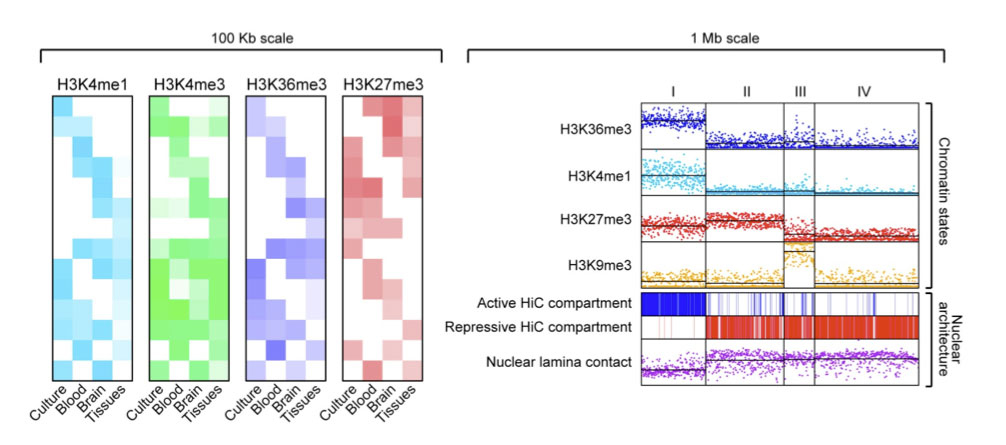Chromatin states reflects development-associated chromatin restriction and nuclear architecture.

Download: Normalized signal in 100kb windows, Coverage in 1Mb windows
Developmental specification is accompanied by a re-organization of the epigenome from a permissive state with dynamic chromatin remodeling to a globally restrictive state. In restrictive state, chromatin assumes a mosaic pattern at 100 Kb scale, where promoter, transcript and distal element marks are highly concordant within a given locus, but are discordant with H3K27me3 (left).
At macro-scale (1 Mb), chromatin patterns are reflective of chromosomal and nuclear architecture. Chromatin state-based genome classification mirrors genome compartmentalization, with active states (I) and repressive states (II-IV) coincide with two HiC compartment respectively. Inactive states are enriched for contacts with the nuclear lamina in certain cells (right).